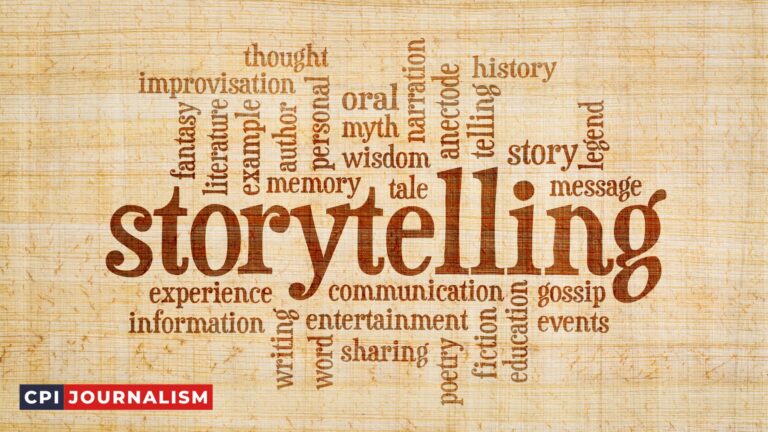What Are The Key Differences Between Sports Journalism And Sports Public Relations?
As an experienced journalist, I understand the importance of understanding the key differences between sports journalism and sports public relations.
For aspiring journalists, it is important to understand that sports journalism and sports public relations are two distinct and separate aspects of the industry.
In this article, I will discuss the fundamental differences between sports journalism and sports public relations, so that you can get a better understanding of how these two professions work and how they interact.
I will also provide insight on how you can use your knowledge of the differences to your advantage. By the end of this article, you should have a clearer idea of what it takes to be a successful sports journalist or sports public relations professional.
A. Definition of Sports Journalism and Sports Public Relations
Sports Journalism is the practice of reporting on sporting events, athletes, and notable figures in the sports world. It involves researching, interviewing, and writing stories about the sports industry and its people.
Sports journalists often work for newspapers, magazines, and websites, and may also appear on television or radio broadcasts.
Sports Public Relations (PR) is the practice of managing the dissemination of information about an athlete, team, or organization to the public. It involves crafting press releases, handling media inquiries, and organizing press conferences and other events.
Sports PR professionals may also assist with marketing and branding activities, as well as crisis communication. In addition, they may be responsible for monitoring the public’s perception of the athlete, team, or organization, and responding to negative publicity.
B. Overview of the Key Differences
Sports journalism and sports public relations are two distinct fields of work, but many people are unaware of the fundamental differences between the two. Both involve communication about sports, but the ways in which they do so are very different.
The primary difference between sports journalism and sports public relations is the writer’s role in each field. In sports journalism, the writer is responsible for providing an unbiased and accurate account of the events they are covering.
The journalist’s primary goal is to inform readers of the facts and to provide a balanced, objective view of the events they are covering. In contrast, sports public relations is focused on crafting and spreading a positive message about a sports team, event, or athlete.
The primary goal of sports public relations is to promote and create a favorable image of the team, event, or athlete being covered.
Another key difference between sports journalism and sports public relations is the type of content each field produces.
Sports journalism typically involves writing about sports news and features, while sports public relations focuses on creating promotional materials such as press releases, media kits, and advertisements.
Sports journalists are expected to be able to report on a variety of topics, while sports public relations professionals are expected to be able to craft an effective message that will reach their target audience.
Finally, the approach and methods used by sports journalists and sports public relations professionals differ significantly.
Journalists must adhere to a set of ethical standards and strive to provide unbiased and accurate coverage, while sports public relations professionals must be able to craft and deliver persuasive messages that will have a positive impact on their target audience.
In conclusion, sports journalism and sports public relations are distinct fields of work that involve different roles, content, and approaches. Understanding the key differences between the two can help aspiring journalists and public relations professionals pursue the right career path.
II. Sports Journalism
Sports journalism is a branch of journalism that focuses on reporting on sports-related topics and events. It is one of the most popular forms of journalism and is closely related to broadcast media, as it often involves covering sporting events as they happen.
Sports journalists are responsible for covering a variety of topics, from player profiles to game previews, in-depth analysis, and post-game recaps.
Sports journalists must be knowledgeable of the sport or sports that they cover, and must be able to produce well-informed, accurate, and engaging content.
They must be able to craft stories that will appeal to a wide audience, and must be able to craft compelling headlines that will draw readers in.
Additionally, sports journalists must be able to adapt to the ever-changing landscape of the sports world, and must be able to keep up-to-date with the latest news and trends.
Sports journalists must also be able to work well with athletes and coaches, and must be able to develop relationships with them in order to gain access to exclusive information.
Sports journalists must also be able to conduct interviews and write stories in a timely manner, as most sports news must be reported quickly.
Finally, sports journalists must have an understanding of the legal issues surrounding sports, as they may be asked to report on topics such as doping, player contracts, and other sensitive matters.
A. Definition
Sports Journalism is the practice of reporting on sporting events, teams, athletes, and related issues for print and electronic media.
Sports journalists cover the news of sporting events and activities, providing stories, interviews and opinion pieces for newspapers, magazines, television, radio and the internet.
Sports Public Relations (PR) is the practice of managing how an organization or individual is perceived by the public. Sports PR professionals work with athletes, teams, leagues, and organizations to help them create and maintain a positive public image.
This is done through media relations, marketing, and other public relations activities, such as social media campaigns, press conferences, community outreach, and crisis management.
In short, Sports Journalists provide news coverage and stories, while Sports Public Relations professionals manage public perception.
B. Role of Sports Journalists
Sports journalists play an important role in keeping fans informed and engaged with their favorite teams and athletes. They provide comprehensive coverage of sporting events, offering insights and analysis to help viewers gain a better understanding of the action.
Sports journalists also serve as an important link between athletes, coaches, and fans, providing a platform for communication and dialogue.
Sports journalists cover both professional and amateur sporting events, giving fans access to the latest information and highlights. They report on a wide variety of topics, including team and player performance, injury news, off-the-field developments, and more.
Sports journalists also provide expert commentary and analysis on the current state of the sports world, helping to create a more informed and engaged public.
Sports journalists are also responsible for accurately and fairly representing their subject matter. They must ensure that their reporting is balanced, unbiased, and based on factual information.
They must also be aware of the ethical and legal implications of their reporting, and must adhere to standards of professional conduct.
In addition to their reporting, sports journalists also have an important role in promoting their work. They must be able to effectively market their articles, broadcast segments, and other works to readers, viewers, and potential employers.
By effectively promoting their work, sports journalists can ensure that their work reaches its intended audience, and that they remain in demand.
C. Types of Sports Journalism
Sports journalism is a broad and diverse field, with various types of journalism dedicated to covering the world of sports. Sports journalists must be knowledgeable about the sport they are covering and be able to write stories in an engaging and informative way.
Here are some of the most common types of sports journalism:
1. News Journalism: News journalists are responsible for reporting on the latest developments in sports, such as player trades, game results, and team news. They must have the ability to research facts and sources, conduct interviews, and write concise and accurate stories.
2. Feature Journalism: Feature journalism focuses more on the personalities and stories behind the sport. Feature journalists look for compelling stories to tell, such as the life of an athlete or a coach, or an unusual occurrence that took place at a game. Feature stories are often longer and more in-depth than news stories.
3. Event Journalism: Event journalists cover sporting events, such as the Olympics or the Super Bowl. They must be able to describe the action on the field or court in an exciting and compelling way. Event journalists are also responsible for interviewing athletes and coaches, as well as providing analysis of the event.
4. Investigative Journalism: Investigative journalists uncover stories that often involve corruption or other illegal practices within the world of sports. They must have the ability to research and dig for information, as well as conduct interviews in order to uncover the truth.
These are just a few of the many types of sports journalism. No matter what type of sports journalism you are doing, the most important thing is to be knowledgeable about the sport and be able to tell compelling stories.
Sports Public Relations
Sports public relations is a field that is closely related to sports journalism, but there are key differences between the two.
Sports public relations focuses on the promotion of sports organizations or teams to the public, while sports journalism focuses on reporting and writing stories about those same organizations or teams.
In sports public relations, the goal is to increase the visibility and popularity of the organization or team. This can be accomplished through a variety of means, including press releases, media relations, event promotion, and more.
It also involves cultivating relationships with the press to ensure that stories about the organization or team are reported accurately and positively.
Public relations professionals also work to cultivate relationships with key stakeholders, such as sponsors, investors, and partners. This helps to ensure that the organization or team is viewed in a positive light and is well-supported by those stakeholders.
Additionally, public relations professionals may work with influencers and celebrities to help promote their organization or team.
Finally, public relations professionals work to manage crises and negative coverage. This can involve responding to negative press in a timely and appropriate fashion, or proactively working to prevent negative coverage from occurring in the first place.
It is an important part of maintaining a good public image for the organization or team.
Overall, sports public relations is an important field that focuses on promoting and protecting the image of sports organizations and teams. It is a specialized field that requires a deep understanding of the sports industry, as well as the ability to cultivate relationships and manage crises.
A. Definition
Sports journalism is a type of journalism that focuses on covering sporting events and athletes, providing an in-depth analysis of the latest developments in the world of sports.
Sports journalists typically write for newspapers, magazines, television, and radio, as well as for websites and other digital media.
They must be adept at researching and interpreting facts, trends, and statistics, and be capable of producing compelling stories that capture the attention of readers and viewers.
Sports public relations, on the other hand, is a type of public relations that focuses on promoting, protecting, and representing athletes and organizations within the sports industry.
Sports public relations specialists typically engage in activities such as writing press releases and articles, building relationships with the media, and producing promotional materials.
They must be skilled in communication, media relations, and strategic planning, and must have a strong understanding of the sports industry as a whole.
B. Role of Sports Public Relations Professionals
Sports public relations professionals are an integral part of the sports industry, working to promote sports teams, athletes, and events. Their job is to create and maintain a positive public image for their clients and to shape the public’s perception of their activities.
Sports public relations professionals are responsible for creating and maintaining relationships with the media, athletes, teams, and other public figures.
They work to create a positive image for their clients through effective communication and marketing strategies. They must be well-versed in public relations techniques and understand the nuances of the sports industry.
Sports public relations professionals are also responsible for creating newsworthy stories and press releases that will be attractive to the media.
They must be able to write effectively and understand how to structure stories to grab the attention of the audience. They must be knowledgeable about the sports industry and be able to interpret complex data and statistics.
Sports public relations professionals must also be able to handle crisis situations and act quickly and professionally to protect their clients’ image.
They must be able to work with the media to ensure that their clients’ messages are accurately communicated. They must also be able to work with sponsors and partners to ensure that their clients’ goals are met.
C. Types of Sports Public Relations
Sports Public Relations (SPR) is a field that deals with creating relationships between organizations and the public. It involves creating a positive image of the organization and its activities, as well as managing the organization’s reputation.
While there are many types of public relations, sports public relations has its own specific set of skills and roles.
One type of sports public relations is media relations. This includes managing the organization’s relationships with the media and providing access to information and resources.
This may involve writing press releases, creating news stories, and organizing press conferences. It also includes monitoring media coverage and responding to inquiries from the media.
Another type of sports public relations is event management. This involves organizing and managing events such as tournaments, charity events, and corporate functions. It also involves coordinating logistics, managing budgets, and promoting the event.
Sports public relations can also involve developing and managing relationships with sponsors. This may involve negotiating contracts, ensuring the organization is meeting its obligations to the sponsors, and creating promotional materials and activities.
Finally, sports public relations involves crisis management. This includes responding to negative media coverage, managing public opinion, and handling potential legal issues. It also involves developing and implementing strategies to ensure the organization’s reputation is protected.
Sports public relations is a complex field that requires a wide range of skills and expertise. It is important for those working in the field to have an understanding of the organization’s goals and objectives, as well as the needs of the public. With the right skills, sports public relations can help organizations achieve success.
IV. Key Differences
Sports Journalism and Sports Public Relations (PR) both involve communicating news and information related to sports, but they are two very different disciplines.
While a Sports Journalist will be tasked with researching, writing, and reporting on stories related to sports, a Sports PR professional will be responsible for creating and executing campaigns to promote a sports team or athlete.
The primary difference between Sports Journalism and Sports PR lies in their end goals. A Sports Journalist’s goal is to report the truth, while a Sports PR professional’s goal is to create and maintain a positive image and reputation for the organization or athlete they are representing.
While a Sports Journalist will be expected to be objective and impartial when reporting on a story, a Sports PR professional will be expected to take the best angle of the story and present it in the most favorable light.
In terms of the types of stories they will be covering, Sports Journalists will typically focus on reporting on sporting events and competitions, while Sports PR professionals will focus on promoting a brand or event.
For example, a Sports Journalist might cover a football game and provide updates on the score and highlights of the game, while a Sports PR professional might promote a new commercial featuring a professional athlete or a new sponsorship deal.
In terms of the tools and resources they use, Sports Journalists will typically rely on their own research and interviews, while Sports PR professionals will rely on creating press releases and other promotional materials to spread the word about the organization or athlete they are promoting.
Finally, the way each profession is evaluated is also very different. A Sports Journalist is evaluated on the accuracy and quality of their reporting, while a Sports PR professional is evaluated on the success of their campaigns and their ability to deliver results.
A. Audience
When it comes to sports journalism and sports public relations, one of the key differences to consider is the audience. Sports journalism is primarily intended for a public audience.
It is published in newspapers, magazines and online, and typically covers topics related to sports news and events. Sports public relations, on the other hand, is intended for a much more targeted audience.
It is usually used to promote and publicize sports teams, athletes and organizations, and can include activities such as press releases, media kits, interviews, and press conferences.
Understanding the difference in the intended audience of sports journalism and sports public relations is key to understanding the difference between the two.
Sports journalism is intended to reach a broad audience, while sports public relations is intended to reach a much more targeted audience. This means that the language, tone and content of the two mediums needs to be tailored to the intended audience.
For example, a sports journalist may use more technical language and a more formal tone to explain the latest sports news, while a sports public relations professional may use more informal language and a more conversational tone to promote a sports team or athlete.
B. Content
Content is the key area of difference between sports journalism and sports public relations. While the primary goal of sports journalism is to inform and entertain readers, the primary goal of sports public relations is to generate favorable publicity for a team, athlete, or organization.
Sports journalists report on the facts, investigate stories, and provide analysis, often from first-hand sources. A sports journalist’s job is to inform readers about the latest developments in the world of sports and to provide an unbiased and accurate report.
On the other hand, sports public relations professionals craft stories about teams and athletes in order to generate positive publicity.
They work to promote events and create content that will attract media attention. PR professionals are also responsible for responding to media inquiries and managing the public image of their clients.
The content produced by a sports journalist is often more detailed and in-depth than the content produced by a public relations professional.
The sports journalist will often research and investigate a story before writing it, while a PR professional might simply rewrite a press release or create content specifically designed to generate positive publicity.
In conclusion, while both sports journalism and sports public relations involve crafting stories, the content they produce is very different.
Sports journalism is focused on providing an accurate and unbiased report on the facts, while sports public relations is focused on generating positive publicity for a team, athlete, or organization.
C. Objectives
Sports journalism and sports public relations have different objectives, and this is one of the key differences between the two. The main objective of sports journalism is to provide an informative and entertaining account of sporting events.
This involves reporting on the events, providing analysis, and interviewing athletes and coaches. Sports PR, on the other hand, is focused on managing the image of a team or athlete.
This involves creating press releases, developing relationships with media outlets, and promoting the team or athlete in the media. A successful sports PR professional must be skilled in both media relations and message crafting in order to effectively reach their target audience.
D. Tools and Tactics
The tools and tactics used in sports journalism and sports public relations are different, though both are invaluable in the success of a team. In sports journalism, the primary tool is the written word.
Journalists must accurately convey what is happening in the sporting world by reporting on games, players, and coaches.
Journalists must have a comprehensive understanding of the rules and regulations of the sport, and have the ability to explain them in a way that is accessible to the public. They must also have a keen eye for detail and be able to identify key moments and storylines.
In sports public relations, the primary tools are communication and relationship building. PR professionals must be able to effectively communicate the team’s message to its fans, the media, and other stakeholders.
They must also be able to build strong relationships with key stakeholders and media outlets. PR professionals must be adept at creating compelling and engaging content that resonates with their target audience.
In both sports journalism and sports public relations, an understanding of the digital landscape is essential. Journalists must be able to leverage social media to promote their stories, while PR professionals must be able to use digital tools to create and distribute content.
It is also important for both professions to have a solid understanding of the latest trends in their respective fields.
E. Impact on the Sports Industry
Sports journalism and sports public relations both play an important role in the sports industry. Sports journalism provides an important source of information and analysis for fans, while sports public relations helps to manage the public image of athletes and sports organizations.
Sports journalism helps to inform the public about the latest developments in the sports world and to provide insight into the motivations and strategies behind the decisions of athletes and teams.
This helps to keep fans engaged and informed, and can also provide valuable data to sports organizations.
Sports public relations, on the other hand, is responsible for managing the public image of athletes and teams. This includes developing press releases and other promotional materials, conducting interviews with athletes and coaches, and responding to media queries.
By controlling the narrative and crafting the story, sports public relations helps to ensure that athletes and teams are portrayed in a positive light, and that any negative news is managed in a professional manner.
The impact of sports journalism and public relations on the sports industry is significant.
By informing the public, sports journalism helps to create a more informed and engaged fan base, while sports public relations helps to manage the public image of athletes and teams. Ultimately, this helps to create a more vibrant and successful sports industry.
V. Conclusion
As an experienced journalist, I can confidently say that the key differences between sports journalism and sports public relations lie in the purpose and manner in which the two are conducted.
Sports journalism is focused on providing accurate, unbiased, and timely information to the public, while sports public relations is focused on promoting a particular team, player, or brand.
The differences between the two also extend to the manner in which they are conducted, as sports journalists are expected to conduct interviews, research, and fact-checking, while sports public relations professionals tend to use more persuasive techniques, such as press releases and sound bites.
The two fields do, however, share some similarities. Both require excellent communication skills and both require the ability to work well under pressure.
Additionally, both require an understanding of the sports world and the ability to work with various stakeholders, including athletes, coaches, and administrators.
Ultimately, understanding these key differences between sports journalism and sports public relations is essential for anyone looking to pursue a career in either field. With the right skills, knowledge, and experience, anyone can become successful in either profession.
A. Summary Of The Key Differences
Sports journalism and sports public relations both play a crucial role in the sports industry. While the primary goal of both is to promote and inform the public about sports, there are distinct differences between the two.
The most obvious difference between sports journalism and sports public relations is their respective roles in the industry. Sports journalism is typically focused on reporting and informing the public about sports news and events.
This includes covering games, providing analysis and commentary, and presenting stories of interest to the public. On the other hand, sports public relations is focused on managing the public image of athletes and sports organizations.
This includes creating campaigns, building relationships with the media, and managing the public’s perception of an athlete or organization.
Another key difference between the two is the approach they take to their work. Sports journalism typically takes an unbiased approach, reporting facts to the public objectively and without opinion.
Sports public relations, on the other hand, takes a more proactive approach, often creating stories or campaigns to shape public opinion about an athlete or organization.
Finally, sports journalism and sports public relations often require different skills and abilities. Sports journalism typically requires excellent writing and research skills, as well as the ability to quickly report on breaking news.
Sports public relations requires strong interpersonal skills, such as the ability to build relationships with the media and effectively communicate a message.
In conclusion, while both sports journalism and sports public relations are essential to the sports industry, the two roles have key differences in terms of their roles, approaches, and skillsets.
B. Impact of the Differences on the Sports Industry
The differences between sports journalism and sports public relations have a significant impact on the sports industry. For starters, sports journalism has the ability to bring attention to issues and stories that often go unreported.
For instance, a sports journalist might investigate stories that the public relations department might not be aware of, or may choose to report on controversial topics in a way that the public relations team would not.
This kind of reporting can help to bring awareness to issues and stories that would otherwise go unnoticed.
On the other hand, a sports public relations team can be used to promote a team, organization, or athlete in a positive light.
This is done by creating press releases, coordinating interviews, and publicizing events. By doing this, a team or organization can use their public relations team to create a favorable image in the public eye.
Finally, sports journalists and public relations teams have different roles when it comes to reporting on the sports industry. Journalists are responsible for reporting on the facts, while public relations teams are responsible for creating a positive image.
This means that each team has a unique role to play when it comes to reporting on the sports industry.
Overall, the differences between sports journalism and sports public relations have a major impact on the sports industry. While the two teams have different roles, they both serve an important purpose in helping to shape the public perception of the sports industry.
VI. References
1. Baima, E. (2016). The Difference between Sports Journalism and Sports Public Relations. Sports Networker. Retrieved from https://www.sportsnetworker.com/2016/06/24/difference-sports-journalism-sports-public-relations/
2. Gorman, J. (2019). What is Sports Journalism? The Art of Sports Journalism. Journalism.co.uk. Retrieved from https://www.journalism.co.uk/skills/what-is-sports-journalism-/s9/a778919/
3. Gorman, J. (2019). What is Sports Public Relations? The Role of Sports PR. Journalism.co.uk. Retrieved from https://www.journalism.co.uk/skills/what-is-sports-public-relations-/s9/a778918/
4. International Sports Press Association (ISPA). (2021). The Role of Sports Journalism. ISPA. Retrieved from https://www.ispa.org/the-role-of-sports-journalism/
5. Mudd, M. (2019). What is Sports Public Relations? Definition, Examples, and Best Practices. G2. Retrieved from https://www.g2.com/categories/sports-public-relations
6. National Association of Sport Public Relations (NASPR). (2021). What is Sport Public Relations? NASPR. Retrieved from https://www.naspr.org/what-is-sport-public-relations







